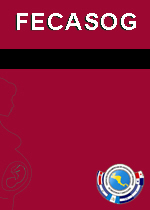Periviabilidad neonatal
Autores/as
DOI:
https://doi.org/10.37980/im.journal.revcog.20211853Palabras clave:
periviabilidad, mortalidad neonatalResumen
La prematuridad es la primera causa de muerte a nivel mundial en menores de 5 años. Aquellos que logran sobrevivir y adaptarse a la vida extrauterina, según el grado de afección, pueden verse condenados a una larga vida de discapacidades y a una calidad de vida reducida. Cuando el parto pretérmino es extremadamente temprano, el grado de compromiso es mucho mayor. Eso obliga al médico tratante a plantearse dos escenarios: ser agresivo y darle todas las oportunidades al neonato, con la esperanza de que sobreviva sin un compromiso mayor, o darle un manejo de soporte mínimo, aceptando que la posibilidad de muerte es elevada y el riesgo de discapacidad demasiado alto como para condenar a todo el núcleo familiar a lidiar con el problema. La decisión no es fácil, ya que los médicos tienen visiones diferentes del problema, algunas veces sustentado en información errónea. Con este motivo en mente se hace una revisión del tema de periviabilidad y nos centramos en mostrar evidencia de los resultados a corto, mediano y largo plazo de estos neonatos.
Publicado
Número
Sección
Licencia
Derechos de autor 2021 Infomedic Intl.Derechos autoriales y de reproducibilidad. La Revista RevCog es un ente académico, sin fines de lucro, que forma parte de la Sociedad Centroamericana de Ginecología y Obstetricia. Sus publicaciones son de tipo ACCESO GRATUITO y PERMANENTE de su contenido para uso individual y académico, sin restricción. Los derechos autoriales de cada artículo son retenidos por sus autores. Al Publicar en la Revista, el autor otorga Licencia permanente, exclusiva, e irrevocable a la Sociedad para la edición del manuscrito, y otorga a la empresa editorial, Infomedic International Licencia de uso de distribución, indexación y comercial exclusiva, permanente e irrevocable de su contenido y para la generación de productos y servicios derivados del mismo.








